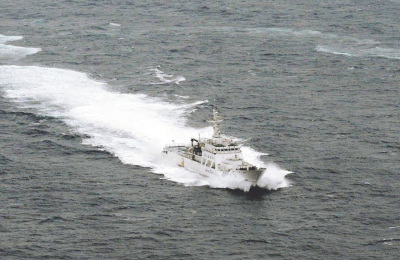The APPS project aims to advance the state-of-the-art in surveillance systems in three key areas:
- It will specify and implement a profiling-based architecture addressing technical, semantic and organizational levels of the interoperability stack, to enable the development of plug & play solutions. As a result, the surveillance systems will work as a system of systems and will be able to exchange and fuse information and share situational awareness.
- It will enable smart surveillance by enhancing the processing of observations made by multisensory systems (radar, visual, thermal, acoustic and physicochemical) and intelligent decision making capabilities. The project will implement a novel approach with sensor fusion by exploiting the benefits of directional acoustic information, multi-view HD/3D video and other sensors.
- It will develop a robust communication layer over heterogeneous technologies.
The project results will be integrated and demonstrated for maritime surveillance, in particular cases based on detecting illegal activities at sea and protection of critical infrastructure at sea and in harbors.
At present, surveillance systems in the maritime domain consist of radar and visual sensors. Whereas radar is used to detect and track vessels, the visual sensors are used for securing borders. However, these sensors are never used in conjunction with full capacity and have severe limitations. Radar is only capable of detecting large vessels without getting details about the type and identity, whereas visual sensors are too static and hamper 3D capabilities. Therefore, future surveillance systems will differ significantly from today’s systems in several important dimensions by exploiting the benefits of different sensor modality. They will integrate high-quality (HD and 3D video), multi-sensory data inputs taken from multiple viewpoints and exchange multi-streamed data between subsystems and take actions in a plug-and-play fashion, where that multidimensional data is analysed in real-time. This will place unprecedented demands on networks for high capacity, low-latency, and low-loss communications paths.
In APPS project, SRDC will lead Plug & Play Surveillance Architecture Work Package, in which data engineering for target applications will be performed and ontologies and profiles will be developed to achieve plug & play architecture for surveillance systems. SRDC will make common data standard analysis and implement the interoperability services. At the end of the project, SRDC will present the APPS results in the related standardization bodies.
| 1. | ASELSAN | Turkey |
| 2. | NanoBiz Nanobiotechnological Systems | Turkey |
| 3. | Otonom Teknoloji | Turkey |
| 4. | SRDC | Turkey |
| 5. | GMT Cybernetics | South Korea |
| 6. | Thales Nederland B.V. | Netherlands |
| 7. | ViNotion B.V. | Netherlands |
| 8. | Technische Universiteit Eindhoven | Netherlands |
| 9. | Microflown AVISA B.V. | Netherlands |
| 10. | Microflown Maritime B.V. | Netherlands |
| 11. | Siqura B.V. | Netherlands |
| 12. | Tellence Technologies SRL | Romania |
| 13. | Prodevelop | Spain |
| 14. | NGARO Intelligent Solutions | Spain |
| 15. | Instituto Tecnologico de Informatica | Spain |
| 16. | NUNSYS | Spain |






